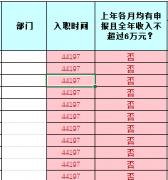问题描述
我的系统是Ubuntu,我已经在/etc/environment中设置了我的环境变量.
My system is Ubuntu and I have set my environment variables in /etc/environment.
如果我使用 CLI 运行 PHP 脚本 - 来自 /etc/environment 的环境变量会被识别.
If I'm running PHP script using CLI - environment variables from /etc/environment are recognized.
但是,如果我通过 http://domain/test.php(即 apache2handler)执行 PHP 脚本,那么同样的脚本打印出 NULL,这意味着来自 /etc/environment 的环境变量没有被加载.
But, if I go to execute PHP script thru http://domain/test.php (that is apache2handler) exactly the same script prints out NULL, meaning environment variables from /etc/environment are not loaded.
我所做的修复是在 /etc/apache2/envvars 中添加变量,从而解决了问题.
The fix I did was adding variables in /etc/apache2/envvars and that solved the problem.
但这是两个不同的文件,因此必须保持同步.
But that is two different files, which then have to be kept in sync.
如何让 PHP/Apache 加载和识别来自 /etc/environment(系统)的环境变量?
How can I make PHP / Apache load and recognize environment variables from /etc/environment (system)?
为了澄清事情,当我说未加载到 PHP 中"时,这意味着来自 /etc/environment 的变量未在 $_SERVER、 中设置$_ENV、getenv() 并且不存在于 $GLOBALS 中.换句话说,没有加载到 PHP 中".
To clarify things, when I say 'not loaded into PHP' it means variables from /etc/environment are not set in $_SERVER, $_ENV, getenv() and do not exists in $GLOBALS. In other words 'are not loaded into PHP'.
推荐答案
我遇到了完全相同的问题.为了解决这个问题,我只是在 /etc/apache2/envvars 中获取了 /etc/environment.
I had exactly the same problem. To solve it, I just sourced /etc/environment inside /etc/apache2/envvars.
/etc/environment的内容:
export MY_PROJECT_PATH=/var/www/my-project
export MY_PROJECT_ENV=production
export MY_PROJECT_MAIL=support@my-project.com
/etc/apache2/envvars的内容:
# Load all the system environment variables.
. /etc/environment
现在,我可以在 Apache 虚拟主机配置文件和 PHP 中使用这些变量.
Now, I'm able to use these variables in the Apache Virtual Host config files and in PHP.
这是一个 Apache 虚拟主机的示例:
Here's an example of an Apache virtual host:
<VirtualHost *:80>
ServerName my-project.com
ServerAlias www.my-project.com
ServerAdmin ${MY_PROJECT_MAIL}
UseCanonicalName On
DocumentRoot ${MY_PROJECT_PATH}/www
# Error log.
ErrorLog ${APACHE_LOG_DIR}/my-project.com_error.log
LogLevel warn
# Access log.
<IfModule log_config_module>
LogFormat "%h %l %u %t "%m %>U%q" %>s %b %D" clean_url_log_format
CustomLog ${APACHE_LOG_DIR}/my-project.com_access.log clean_url_log_format
</IfModule>
# DocumentRoot directory
<Directory ${MY_PROJECT_PATH}/www>
# Disable .htaccess rules completely, for better performance.
AllowOverride None
Options FollowSymLinks Includes
Order deny,allow
Allow from All
Include ${MY_PROJECT_PATH}/config/apache/inc.mime-types.conf
Include ${MY_PROJECT_PATH}/config/apache/inc.cache-control.conf
# Rewrite rules.
<IfModule mod_rewrite.c>
RewriteEngine on
RewriteBase /
# Include all the common rewrite rules (for http and https).
Include ${MY_PROJECT_PATH}/config/apache/inc.rewriterules-shared.conf
</IfModule>
</Directory>
</VirtualHost>
这是一个如何使用 PHP 访问它们的示例:
And this is an example of how to access them with PHP:
<?php
header('Content-Type: text/plain; charset=utf-8');
print getenv('MY_PROJECT_PATH') . "
" .
getenv('MY_PROJECT_ENV') . "
" .
getenv('MY_PROJECT_MAIL') . "
";
?>
这篇关于如何在运行 CLI & 时将系统环境变量导入 PHPApache2处理程序?的文章就介绍到这了,希望我们推荐的答案对大家有所帮助,也希望大家多多支持跟版网!



 大气响应式网络建站服务公司织梦模板
大气响应式网络建站服务公司织梦模板 高端大气html5设计公司网站源码
高端大气html5设计公司网站源码 织梦dede网页模板下载素材销售下载站平台(带会员中心带筛选)
织梦dede网页模板下载素材销售下载站平台(带会员中心带筛选) 财税代理公司注册代理记账网站织梦模板(带手机端)
财税代理公司注册代理记账网站织梦模板(带手机端) 成人高考自考在职研究生教育机构网站源码(带手机端)
成人高考自考在职研究生教育机构网站源码(带手机端) 高端HTML5响应式企业集团通用类网站织梦模板(自适应手机端)
高端HTML5响应式企业集团通用类网站织梦模板(自适应手机端)